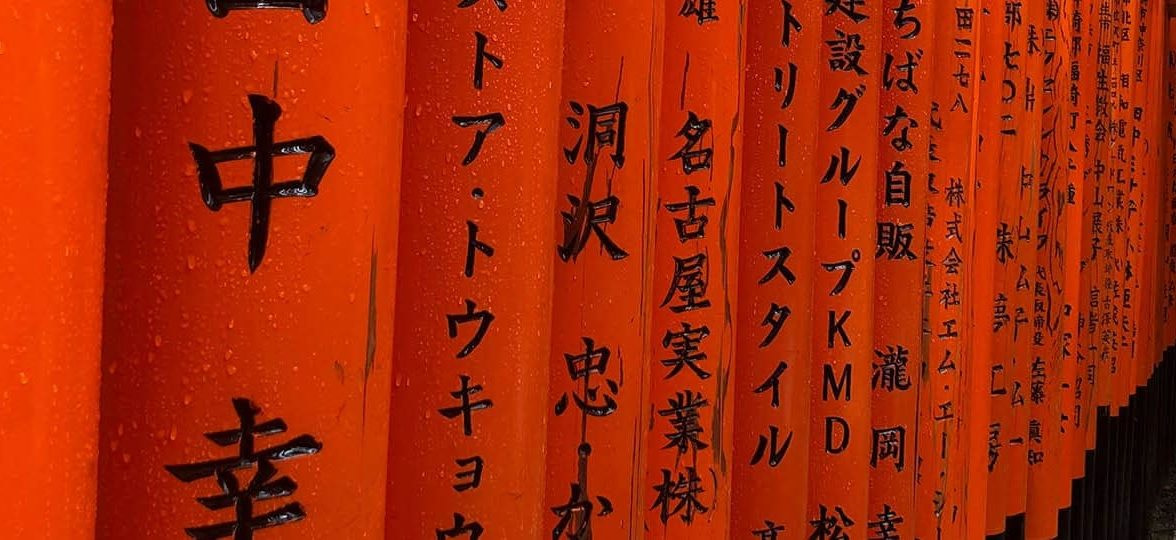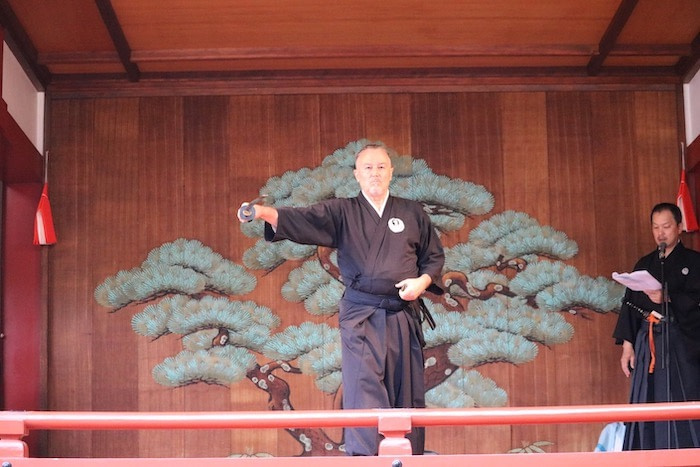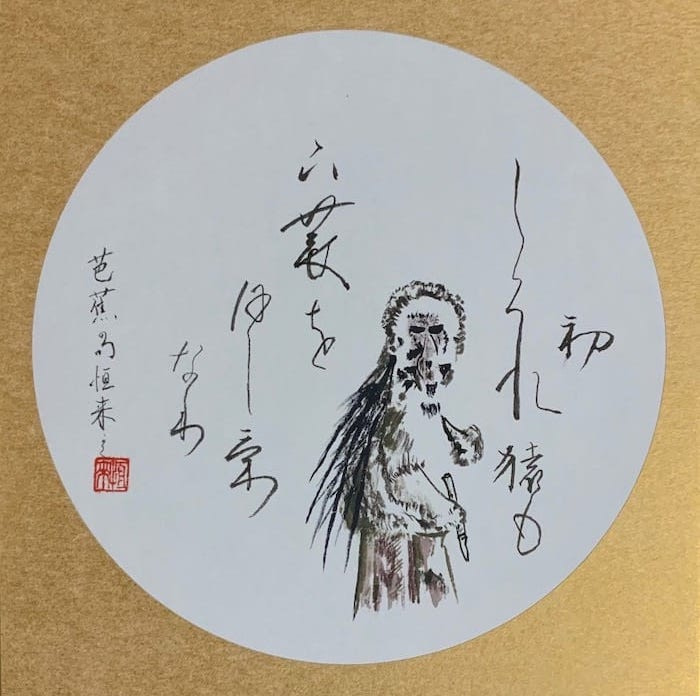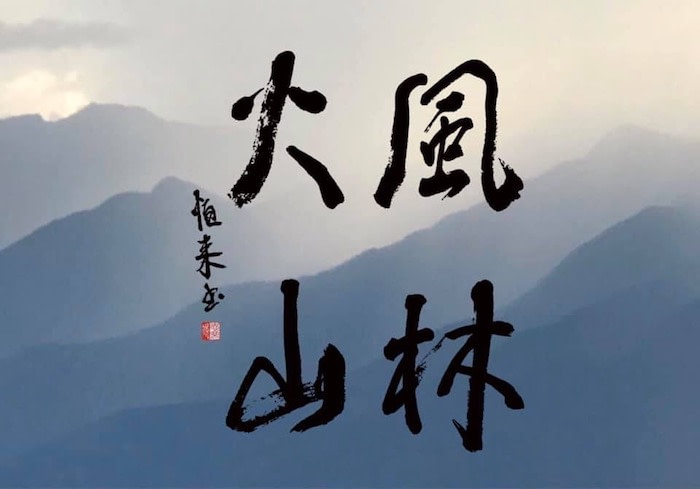William Reed: a calligrapher’s guide to self-discovery
We spoke to Reed about samurai wisdom, calligraphy, and the ins and outs of promoting a book.

William Reed is what one would call a “shinnichi” – a Japanophile. After more than fifty years in Japan, the US-born author and calligrapher’s love for the country hasn’t faded. If anything, it got stronger.
A teacher, writer and public speaker, he’s committed to sharing his knowledge of Japanese, martial arts and calligraphy with the world. In his latest book, Song of the Brush Dance of the Ink: the Path to Self-Discovery through Japanese Calligraphy, he explores the philosophical and introspective dimensions of calligraphy.
We spoke to Reed about samurai wisdom, calligraphy, and the ins and outs of promoting a book.

Tell us a bit more about yourself. Where does your passion for Japanese culture come from?
Though I am from the United States, I first came to Japan as a college exchange student in 1972. I began the study of Aikido and brush calligraphy (shodo) and my passion for the Japanese language and culture has never faded since. Fifty years later, I have an 8th-dan in Aikido, a 10th-dan in Shodo, have published several books, and teach at the International College of Liberal Arts (iCLA) near Mount Fuji.
Because of its connection to the language and the culture, Japanese calligraphy has been at the core of my passion from the beginning. I am currently vice-chairman of the Japan Calligraphy Education Association and have just published a book called Song of the Brush Dance of the Ink with Morgan James Publishing due to be released in May.
I see shodo as a form of visual jazz
To me, no other art combines visual art, poetry, philosophy, and psychology quite as well as calligraphy. I see shodo as a form of visual jazz. The practice of painting poetry with a brush has a lot in common with performing classical music or jazz on an instrument. You follow and interpret a score, produce strokes in space with rhythm and dynamics, and tell a story. In fact, Japanese ink painting was part of the inspiration behind the best selling jazz album of all time, Kind of Blue, by Miles Davis.
What do you find in Japanese philosophy that you feel is missing from Western culture?
The Japanese place a high value on harmony with nature, connectivity in society, and quality in craftsmanship. While this contributes to a higher quality of life and lower conflict, it sometimes means less privacy and more obligations to the group.
There is a greater sense of trust, and there seems to be a common value placed on continuous improvement. Of course, there are social and psychological problems in any society, but people can be quite adaptive and resilient in the face of change.
Japan simultaneously embraces tradition and innovation
Japanese society has been shaped over the centuries by Shinto, Buddhist, Confucian, and even Christian influence from the West, which has led to a fair level of tolerance, and a synthesis of spiritual values based on harmony. I like the fact that Japan simultaneously embraces tradition and innovation and they are very good at learning something new from the old.

How did you learn calligraphy?
Which comes first, the chicken or the egg? There is a Zen saying that refers to the way in which a bird inside the shell is not strong enough to break out by itself. The mother bird senses where the baby is pecking from the inside and pecks back from the outside at the same place and time. In this way, the eggshell is safely broken and the baby bird emerges where it can learn to fly.
I feel that this describes the process by which I have learned calligraphy, studying with master teachers, polishing my skills, gradually learning to fly.
To become a good calligrapher you need a master teacher, quality materials, curiosity, perseverance, much as you would with any art or craft. You also need a sensitivity to language and visual art.
Tell us more about your book, Song of the Brush Dance of the Ink: the Path to Self-Discovery through Japanese Calligraphy.
Though I have been learning calligraphy for fifty years, thirty years ago I published my first book on calligraphy, Shodo: the Art of Coordinating Mind, Body, and Brush. At that time, I painted a scroll with one of my favourite poetic phrases: Song of the Brush Dance of the Ink. In my new book, I show it alongside a scroll of the same poem painted thirty years later – traces of my journey in ink.
Scientists in Japan have measured how the practice of shodo with a small brush stimulates the brain in so many areas that it is now considered as a possible way to prevent dementia. No wonder the practice of copying Buddhist sutras has been a means for mindfulness and meditation practised by Buddhist monks for well over 2000 years.
I wrote this book as a milestone in my own legacy, but also to honour and thank the teachers and people who have guided me on this journey. I want to light the path to mastery based on what I have learned.
What is something you wish more people knew about Japanese calligraphy?
Shodo is one of the “five excellences” in the education of a whole person: calligraphy, painting, poetry, sword, and tea. My favourite proverb in this regard is “master of sword and letters” (Bunbu Ryodo). With English interpretation and guidance, it opens up new ways to wisdom, mindfulness, character development, and cultural appreciation.
Just as you don’t need to speak Italian to enjoy opera, you don’t need to be fluent in Japanese to enjoy calligraphy. But understanding how it works can greatly enhance your appreciation. Shodo is a discipline for learning to see what is actually in front of your eyes and demonstrating your awareness by reproducing it in your own brushwork.
Did you face any difficulties figuring out how to attract a wider readership?
I have found people very receptive to calligraphy when it is properly introduced. It’s an artistic way to charge the energy of a martial arts dojo, meditation room, or modern interior. Writing the book helped me focus on calligraphy as a path to self-discovery. I also created a book blog to share updates, backstories and applications.
I’ve been promoting my work with print – Business Cards, stationery, Notebooks and Posters, which is where MOO excels. Plus, I’m creating an online course where beginners can learn how to master the brush and play the Songs of the Brush themselves.
All of this has led to opportunities to appear on podcasts and deliver keynote talks. Now, I also have an Internet radio channel where I share stories and experiences as a calligraphy artist. The book has catalyzed opportunities to share my experience as a calligraphy artist far beyond my own training and exhibitions.
How do you use MOO to promote your new book?
I have been introducing my book through MOO cards and Bookmarks which feature my calligraphy signature. We have designed signatures for executives of well-known international corporations. We’ve helped them by creating a signature in calligraphy to correlate with each of their powerful stories. I’m planning to propose additional uses of calligraphy on MOO cards for personal branding and gifts.
MOO cards can provide inspiration for a signature story. My own signature is rendered with the characters for 志 Will (or Mission) and 歩 (ayumu) Walk, hence Will-ayumu or William, meaning to Walk your Mission. This becomes a talking piece when introducing myself and my book, Song of the Brush Dance of the Ink using MOO cards and a Bookmark. Thanks to the design work by MOO designers, not only the colour but the touch and feel of the soft paper of the cards is nearly identical to the cover of my book. It always sparks conversations and can be effective for authors and artists as well.
I have actually started a service as well, in which we design your signature in beautiful calligraphy, with characters that tell your signature story with a meaningful match for your name in Japanese characters.
How does your practice of martial arts help with your day-to-day life?
After I had been practising Aikido for ten years, my father asked me “haven’t you graduated from that Aikido yet?” It reflects a fundamental difference in the Western idea of progress and graduation versus the Asian idea of life as a cycle of seasons in which you return to the beginning and repeat the process. You return to fundamentals with a new perspective.
In Japan, many shrines and temples are located on mountains, with a considerable climb of stairs to reach them. The longest stairway I ever climbed was at Mount Haguro in Yamagata prefecture, where you reach the shrine only after climbing 2500 steps through a long path lined with hundreds of year-old Japanese cedars. You cannot conquer this mountain. The only way to manage it is to shed your mind and body of useless thoughts and return to a humble beginner’s mind. This is similar to the process that you go through in martial arts and shodo over many decades of practice.

You also lead events to help businesses and individuals learn from samurai culture. How do you think it applies to modern-day challenges?
The wisdom from samurai culture has practical applications in a contemporary context. Zen was an inspiration for samurais in the Sengoku era, or “period of civil wars”, and the tea ceremony underwent some of its greatest development under their sponsorship. The disciplines of the tea ceremony and shodo demand full engagement, relaxation in the midst of ritual. This is not like hanging out at a hot springs resort. Masters of these Zen arts were able to assist people struggling with conflict or difficult dilemmas.
Companies like Apple and Google, leading sports coaches like Phil Jackson, and executive coaches like Marshall Goldsmith encourage Zen and mindfulness training for their employees and clients. It promotes balance in mind and body and serves as a catalyst for creativity and innovation.
The benefits come more from what you practice than what you say.
I find however that much of what you read in this regard comes from ideas about Zen popularized in the decades before and after WW2. I remember the late 1960s and early 1970s when entire racks of shelves in bookstores were dedicated to books on Zen. Much of the ado made about mindfulness is simply recycled from that era and grounded in philosophy rather than practice. I believe the benefits come more from what you practice than what you say.
Any advice for aspiring authors?
I recommend creating content that is welcomed on other people’s platforms, ranging from social media to YouTube to podcasting. Producing an article and video for a martial arts publication as part of my regular column led to a video on YouTube which received over one million views in one year. That in turn led to an invitation from a major television program to be in a documentary series that was viewed nationwide. Both featured my calligraphy. I could never have received such leverage and exposure relying on my own website or social media followers.
I would also encourage aspiring authors to maintain a strong presence in both digital and print media. Sometimes the same data can be used in both. Digital access and distribution are highly efficient and visible, but you need to connect with readers to create longevity for your book and your personal brand.
The design team at MOO helped me get off to a great start with MOO cards and Bookmarks. MOO technology offers opportunities for high-quality printing and design in stationary, notebooks, and posters. My strategy is to use these in promoting my books and encourage clients to use MOO cards in creative ways that feature my calligraphy and content in ways that serve them.
Create your own Business Cards and Postcards on moo.com. Or unlock Bookmarks and even more products with Business Services.
Keep in touch
Get design inspiration, business tips and special offers straight to your inbox with our MOOsletter, out every two weeks.




